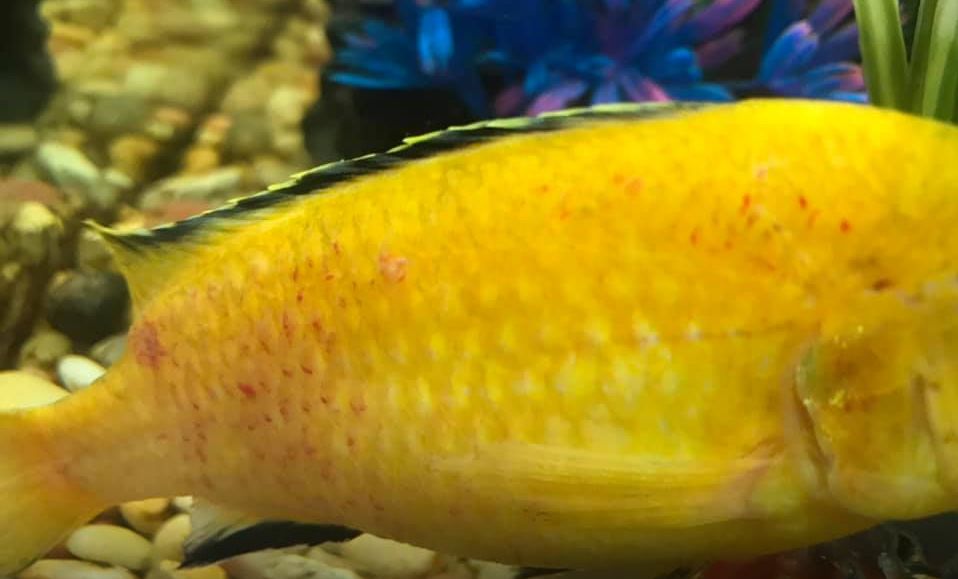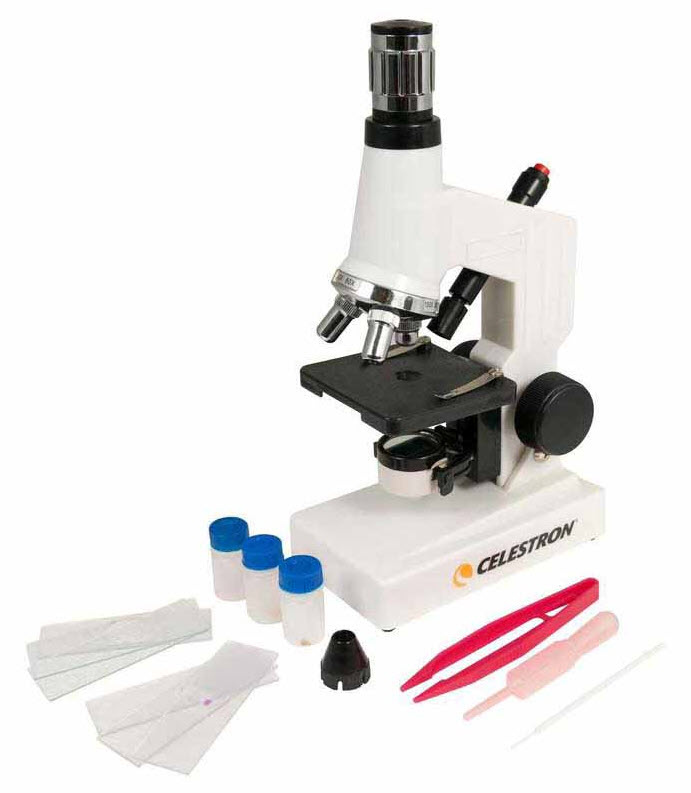Another external parasite of fish is monogenean flukes; microscopically small, flat oval segmented flatworms (Platyhelminths). They are small relatives of the planaria. There are two types of flukes commonly seen on fish: Gyrodactylus (skin fluke) and Dactylogyrus (gill fluke). Flukes typically can’t be seen on the fish.
Symptoms
Skin flukes produce twitching and flashing as the fish is irritated by the skin flukes. The fish rubs against things in the aquarium and the substrate. Often the skin gets small red dots, what looks almost like a pink cast to it. And often the skin has a lot of excess mucus. Or the gills are reddened and inflamed. Unfortunately the symptoms of flukes are identical to many other infections of fish. So without a microscope analysis one is pretty much guessing that one has flukes.
Sometimes there are small black spots on the fish caused by a particular type of fluke. Heavy infestations give the same symptoms as standard flukes only with the addition of small black spots. This disease is looked at in a separate article:

If the fish has flashing and twitching with some blood spots one CAN assume you have flukes and treat with Praziquantel (Hikari Aquarium Solution Health Aid PraziPro, Thomas Labs Fish Tapes, Tremazol and Fish Tapes Forte). Personally I like to treat with both praziquantel, an ich medication like Ich-X and an antibiotic. I do not own a microscope.

With gill flukes the fish in the early stages acts just like a fish with early stage ich, velvet or costia. The flukes are concentrated on the gills and the fish gasp for air at the surface of the water. Large amounts of mucus are produced by the gills and some mucus is seen on the body.
In the latter stages with flukes the colors of the fish become “faded” in appearance in patches. This gives the fish a mottle appearance that is difficult to differentiate from aggression from other fish. The colors become faded because the fish is trying to rid itself of flukes in its skin by producing large amounts of thick mucus. Gills will usually become protuberant and usually are red. Excess slime can easily be observed, either in the gills or on the skin. This is “slime coat syndrome”.

Behandeling
Slime coat syndrome can also be caused by skin protozoans like costia and chiladonella and bacteria. So only slime coat with no twitching, flashing or blood spots needs a “shotgun” approach with three medications.
Treat this slime coat with a combination of:
- Praziquantel (Hikari Aquarium Solution Health Aid PraziPro, Thomas Labs Fish Tapes, Tremazol and Fish Tapes Forte) in the water AND in the food
- Formalin/malachite green (Ich-X, Rid-Ich Plus, Blue Planet White Spot Remedy and Mardel QuickCure) in the water.
- A broad-spectrum antibiotic (Thomas Labs Fish Mox, Midland Vet Service Aqua-Mox, VetDepot Amoxicillin, SeaChem KanaPlex, Fishbiotic Ampicillin, Mardel Maracyn 2, Thomas Labs Fish Min API Tetracycline, Thomas Labs Fish Doxy), added ONLY to the food.
Personally I like the Thomas Labs Fish Tapes (Praziquantel) 34 mg. This is a dry powder which mixes into water. Hikari Prazipro is a clear pink liquid. If the clear pink color has gone to decidedly yellow color the Prazipro is no longer any good.
Note that praziquantel will typically not completely eliminate ALL the flukes from a fish. It will just get most of them so the fish can get back to health. If one finds a fish with fluke problems, look for an underlying stressor that is causing the fish to be so run down flukes can get the better of it.
There is research which says a 3% salt bath (the salt concentration of the ocean), repeated every 24 hours is effective. Put the fish in a 3% salt bath for 30 seconds to ten minutes. When the fish loses equilibrium and rolls over, quickly return them to fresh water.
A liter of water is 1,000 grams. There are 5.69 grams of salt in a level teaspoon of salt. So a 3% solution is about 5 level teaspoons of salt per liter of water. Or 20 level teaspoons (roughly half a cup) per gallon of water in a tray. The exact concentration of salt isn’t too important, just make sure it is strong.
Microscoopanalyse
A microscope is a good investment for a fish keeper. DO NOT BUY an electronic USB digital microscope which attaches to one’s computer. These don’t do the job. Instead get a student microscope with at least 600X power.

If one has a microscope and looks at a scraping of the skin one can see the flukes very easily.

It is important to note that the majority of fish in most aquariums will have some flukes on them. The fish peacefully co-exist with their flukes. But sometimes things get out of hand. Most times this will be due to long term stress on the fish. Typically this long term stress has to do with not having bacteria free, crystal clear, water.
If you have a microscope and find a lot of flukes in the slime coat of the fish, it is best to treat with praziquantel in BOTH the water and the food. Praziquantel is absorbed by the blood from the gut of the fish and will express itself in the mucus coat on the fish, killing the fluke. Praziquantel (Hikari Aquarium Solution Health Aid PraziPro, Thomas Labs Fish Tapes, Tremazol and Fish Tapes Forte) is a treatment highly effective against flukes, tapeworms and flatworms. Fenbendazole, copper and No-Planaria seem to be less effective against flukes than praziquantel but can be used if that is all one can get.
| Type of worm | Examples of this Phylum | Selective Medicijnen | Non-Selective Medicijnen |
|---|---|---|---|
| Flatworms | Flukes | Praziquantel in Water & Food | Fenbendazole in Water & Food |
| Flatworms | Tapeworms | Praziquantel only in Food | Fenbendazole only in Food |
| Roundworms nematoda | Camallanus Capillaria | Levamisole only in Food | Fenbendazole only in Food |
| Praziquantel does not kill snails or shrimp Fenbendazole and Levamisole kill snails but not shrimp |
|||
Praziquantel is FDA approved for use in humans, so we know it is very safe and effective. Treatment needs to be done for at least three weeks to be effective.

“Yellow Grub” (Clinostomum marginatum)
There is a very rare type of trematode fluke found very rarely in pond raised fish in the aquarium. This rare creature is common on game fish in lakes and streams and called a “yellow grub” by fishermen. But this flatworm has a life cycle that requires three hosts, a fish, a bird and a snail. So it cannot reproduce in an aquarium. It is a 1/8 to 1/4 inch long yellow worm that lives curled up in a cyst just under the skin and scales of a fish. It can be controlled only by praziquantel or fenbendazole only in the food.

Scutariella
There is another type of flatworm, related more closely to a planaria than a fluke, found in shrimp colonies. It is called Scutariella Japonica. It is a very small worm like white creature that stick out into the water in colonies and feeds off detritus. It uses shrimp or crayfish (“lobsters”) to attach to while it feeds. It is harmless in general. Praziquantel is the drug of choice, but fenbendazole can be used if there are no snails in the tank. In this case put the medication in the water.


